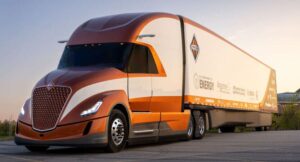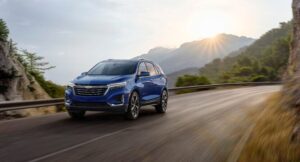By Ricardo Rodriguez Long / President Hispanic Motor Press
While market uncertainty creates challenges across industries, visionary automotive leaders recognize that downturns present the most significant opportunities for expanding market share. Companies that strategically invest during volatile periods emerge stronger when the economic market recovers. The demographic reality reshaping America’s automotive landscape presents exactly this type of strategic opportunity—one that will determine which brands lead the next decade.
The Demographic Reality
The American automotive market is undergoing a transformation that is irreversible. Hispanics now represent 68 million consumers—over 20% of the national population—and are projected to reach 22% to 25% by 2030, according to several reports. This isn’t emerging data that requires further analysis; it’s a current market reality that demands an immediate strategic response.
Since 2010, when I first presented this demographic shift to manufacturers at the LA Auto Show’s Hispanic Motor Press Awards, the numbers have validated every projection. Hispanic population growth has driven 62% of the total U.S. population expansion, while the non-Hispanic white population declined by 5% during the same period. Those manufacturers that acted on this intelligence gained a competitive advantage. Those still “collecting data” face an increasingly difficult path to market relevance.
The Mathematics of Competitive Advantage
The business case transcends demographic trends—it’s about capturing extraordinary lifetime value. Hispanic households will spend approximately $2.5 million over their remaining lifetimes, significantly exceeding the expenditures of other demographic segments. This elevated spending power stems from larger family sizes, younger age profiles, and extended consumer lifecycles that translate into multiple vehicle purchases, comprehensive warranties, and long-term service relationships.
Current market dynamics amplify this opportunity. Ninety-two percent of projected population growth over the next five years is expected to come from the Hispanic segment—approximately 169 new Hispanic consumers entering the market every hour. These aren’t future customers; they’re today’s purchasers whose brand loyalties are still forming.
Strategic Geographic Concentration
Hispanic consumers concentrate in America’s most lucrative automotive markets. California and Texas account for 48% of the U.S. Hispanic population while representing only 27% of the total U.S. population. This geographic clustering creates exceptional marketing efficiency, enabling automotive brands to achieve substantial market penetration through focused regional strategies that scale nationally.
Digital-First Behaviors Drive Purchase Decisions
Hispanic consumers exhibit purchasing behaviors that align perfectly with the automotive industry’s digital transformation. They exhibit higher mobile device usage for research and major purchase decisions, with 45% preferring mobile interactions. This mobile-first approach extends throughout the vehicle shopping journey—from initial research to financing applications.
Critically, their digital engagement enhances rather than replaces in-person experiences. Hispanic consumers utilize digital tools to conduct thorough research before dealership visits, potentially reducing acquisition costs while improving conversion rates. They represent the ideal customer profile for omnichannel automotive marketing strategies.
The Competitive Window
Market analysis reveals that Hispanic consumers currently show a preference for established financial institutions and major retailers, suggesting that brand loyalties remain fluid. This creates a competitive window for automotive manufacturers willing to invest in authentic market engagement. However, this window is closing as consumer preferences solidify and early-moving competitors establish market positions.
Hispanic consumers value convenience, competitive pricing, and comprehensive service offerings—attributes that align with the current capabilities of the automotive industry. Success requires culturally relevant strategies that acknowledge diversity within Hispanic communities, including language preferences, cultural backgrounds, and varying levels of acculturation.
The Strategic Imperative
The automotive industry faces a binary choice: either proactively engage with this demographic transformation or surrender market share to competitors who recognize the demographic reality. Hispanic consumers represent both an immediate market opportunity and long-term growth protection as their influence expands across all vehicle segments.
Success demands more than translated marketing materials or occasional cultural campaigns. It requires a comprehensive understanding of Hispanic consumer behaviors, purchase influencers, and cultural factors that drive major buying decisions.
The Partnership Solution
The Hispanic Motor Press Foundation provides automotive manufacturers with the strategic insights, cultural expertise, and authentic community connections necessary to capture this market opportunity effectively. We’ve spent over a decade tracking these demographic shifts, working with manufacturers who recognized early that America’s automotive future is multicultural.
The transformation is accelerating. The question isn’t whether Hispanic consumers will reshape automotive market dynamics—it’s whether your brand will lead this transition or react to competitors who moved first.
Let me show you how to convert demographic change into a competitive advantage.


